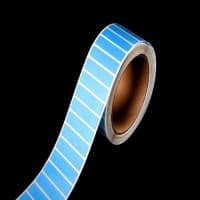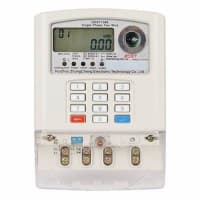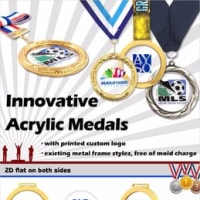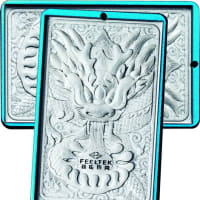Aluminum alloy anodizing finish for rapid prototyping
In the process of making rapid prototypeing, we will contact various parts, which means there are different finishing requirements. anodizing is one of them. Today, we will introduce this process.
Anodizing is a kind of electrolytic oxidation. In this process, the surface of aluminum alloy is usually transformed into an oxide film, which has protective, decorative and other functions. It can be divided into hard anodizing and ordinary anodizing of aluminum alloy.
Anodizing process flow:
Mechanical polishing - degreasing - alkaline washing - Pickling - chemical polishing - Anodizing - dyeing - hole sealing - Mechanical brightness
1. Pretreatment: degrease, purpose: to remove oil stain on the surface of workpiece. The method is to use carbon tetrachloride, trichloroethylene, gasoline or toluene as cleaning agent, immerse the aluminum parts, brush them with a brush, air dry them, and then immerse them in water for several times. Wash with hot water immediately after oil is removed. If a black film is formed on the surface, soak it in 32% nitric acid solution for 20 seconds to remove the black film. Finally, rinse it with cold water and immerse it in distilled water for oxidation film.
2. Anodizing:
1) Preparation of sulfuric acid electrolyte: it is composed of 18-20 kg sulfuric acid and 80-82 kg deionized water. At this time, the specific gravity of the solution is about 1.125-1.140. Sometimes, in order to obtain a good protective oxide film, a small amount of oxalic acid is usually added to the sulfuric acid electrolyte.
2) Oxidation process: install the line instrument, take the aluminum parts to be dyed as anode and immerse them in the electrolyte, then connect the power supply and control according to the following process conditions
The electrolyte temperature is controlled at 12-25 ℃, the anode current density is 1-2 A / decimeter 2, and the voltage in the bath is 13-23 v. About 30-40 minutes.
After the operation according to the above process, take out the aluminum parts from the electrolyte at any time, wash the acid solution with clean water, pay more attention to the low concave part, otherwise there will be white spots. After the acid is cleaned, immerse it in clean water for standby.
3. Dyeing: after anodizing, the surface of aluminum parts forms adsorption, and the color complex is formed by covalent bond or hydrogen bond bond.
(1) dye selection: there are two kinds of dyes: inorganic dye and organic dye. Most of the inorganic dyes are composed of inorganic salts. When dyeing, the aluminum parts are soaked in the solution of a and B compounds respectively to form colored compounds, so as to achieve the purpose of dyeing.
(2) Dyeing operation: ① dyeing monochromatic method: immediately immerse the anodized aluminum products washed with clear water into the coloring solution at 40-60 ℃. Soaking time: 30 seconds - 3 minutes for light color; 3 - 10 minutes for dark color and black color. Take out after dyeing and wash with water. Dyed polychromatic method: if you dye two or more different colors on the same aluminum piece, or print landscapes, flowers, birds, characters and characters, the procedures are very complicated, such as coating masking, direct printing and dyeing, foam plastic flapping, etc. The operation of the above methods is different, but the principle is the same. Now the coating masking method is introduced as follows: this method is mainly to brush the quick drying and easy cleaning varnish thin and evenly on the really needed yellow to mask it. After the paint film is dry, immerse all aluminum parts in dilute chromic acid solution to remove the yellow part of the unpainted varnish, take it out, wash away the acid solution with clear water, dry it at low temperature, and then dye red. If you want to dye the third and fourth colors, you can operate according to the above method.
4. Sealing: after the dyed aluminum parts are washed with water, immediately put them into distilled water at 90-100 ℃ and boil for 30 minutes. After this treatment, the surface becomes uniform and porous, forming a dense oxide film. The dye is deposited in the oxide film and can not be wiped off any more. The sealed oxide film no longer has adsorption, and its wear resistance, temperature resistance and insulation are enhanced. After the sealing treatment, the surface of the aluminum parts can be dried, and then polished with soft cloth to obtain beautiful and bright aluminum products. For example, after the sealing treatment, the protective agent applied on the aluminum parts shall be removed, and the small area shall be wiped with cotton stained with acetone, and the large area can be immersed in acetone to wash the paint.
5. The common anodizing processes of aluminum alloy include sulfuric acid anodizing process, chromic acid anodizing process, oxalic acid anodizing process and phosphoric acid anodizing process. The most commonly used is sulfuric acid anodizing.
(1) Sulfuric acid anodizing: at present, sulfuric acid anodizing is widely used at home and abroad. Compared with other methods, sulfuric acid anodizing has great advantages in production cost, oxidation film characteristics and performance. It has low cost, good transparency, corrosion resistance, friction resistance, easy coloring and other advantages. It uses dilute sulfuric acid as the point solution to anodize the product. The thickness of the film can reach 5um-20um. The film has good adsorption, colorless and transparent, simple process and convenient operation.
(2) Chromic acid anodizing: the film obtained by chromic acid anodizing is relatively thin, only 2-5um, It can keep the original precision and surface roughness of the workpiece: low porosity, difficult to dye, and can be used without sealing; soft film, poor wear resistance but good elasticity; strong corrosion resistance, small solubility of chromium to aluminum, so that the corrosion of parts by residual liquid in pinholes and gaps is small, which is suitable for castings and other structural parts, and the process is widely used in military. At the same time, the quality of components can be inspected, and the brown electrolyte will flow out at the crack, which is obvious.
(3) Oxalic acid anodizing: oxalic acid has low solubility to aluminum oxide film, so the porosity of oxide film is low, and the wear resistance and electrical insulation of the film are better than sulfuric acid film; however, the cost of oxalic acid anodizing is 3-5 times higher than sulfuric acid; at the same time, oxalic acid will be reacted at both cathode and anode, resulting in poor stability of electrolyte; The color of oxalic acid oxide film is easy to change with process conditions, resulting in color difference of products, so the application of this process is limited. But oxalic acid can be used as sulfuric acid oxidation additive.
(4) Phosphoric acid anodizing: the dissolution of oxide film in phosphoric acid electrolyte is larger than sulfuric acid, so the oxide film is thin (only 3um), and the pore size is large. Because phosphoric acid film has strong waterproof property, it can prevent the adhesive from aging due to hydration, so it is mainly used for surface treatment of printed metal plate and pre-treatment of aluminum workpiece bonding.
6. Anodizing: overcome the defects of surface hardness and wear resistance of aluminum alloy, expand the application scope, extend the service life, improve the corrosion resistance, enhance the wear resistance and hardness, protect the metal surface, etc.
7.Compared with the common oxide film, the hard anodizing of aluminum alloy has the following characteristics: the oxide film is relatively thick (generally thickness is not less than 25um), the hardness is relatively high (more than 350hv), the wear resistance is good, the porosity is low, the breakdown voltage is high, and the surface flatness may appear slightly worse.



















※コメント投稿者のブログIDはブログ作成者のみに通知されます